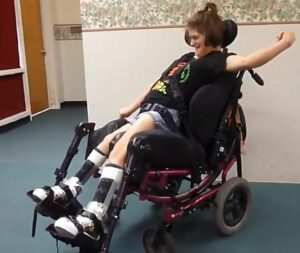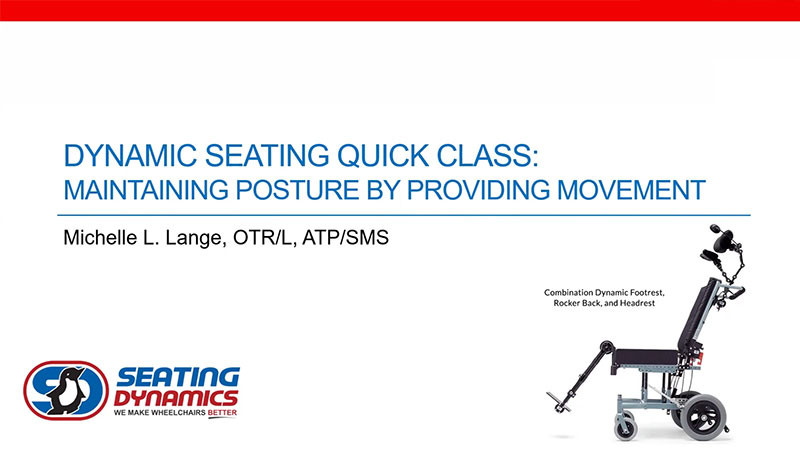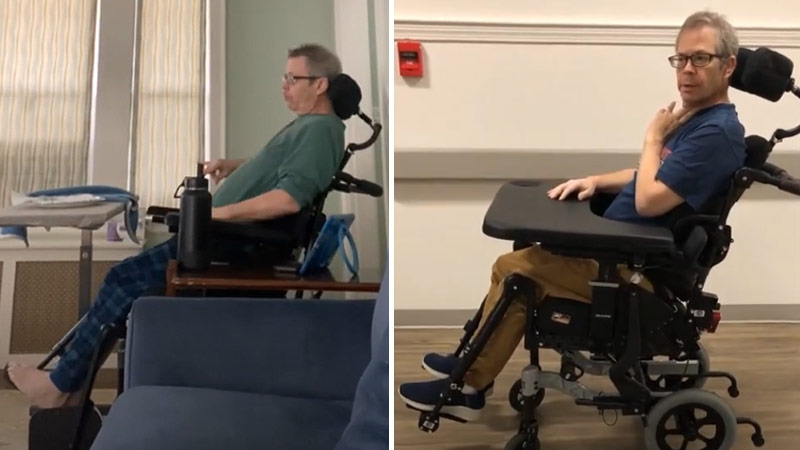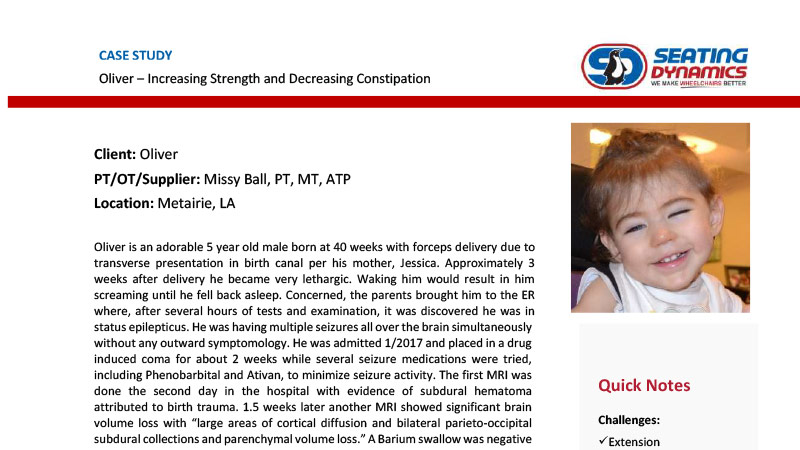Revolutionizing the Dynamic Footrest
Traditional wheelchair footrests are designed to provide postural support and stability as well as distribute weight bearing during sitting. When subjected to significant forces, the footplates may move out of alignment or the footrest assembly may be damaged. Dynamic Footrests move in response to client movement and force. As the client moves, the Dynamic Footrests absorb and diffuse forces, protecting the client from injury, preventing equipment damage, and providing numerous therapeutic benefits.
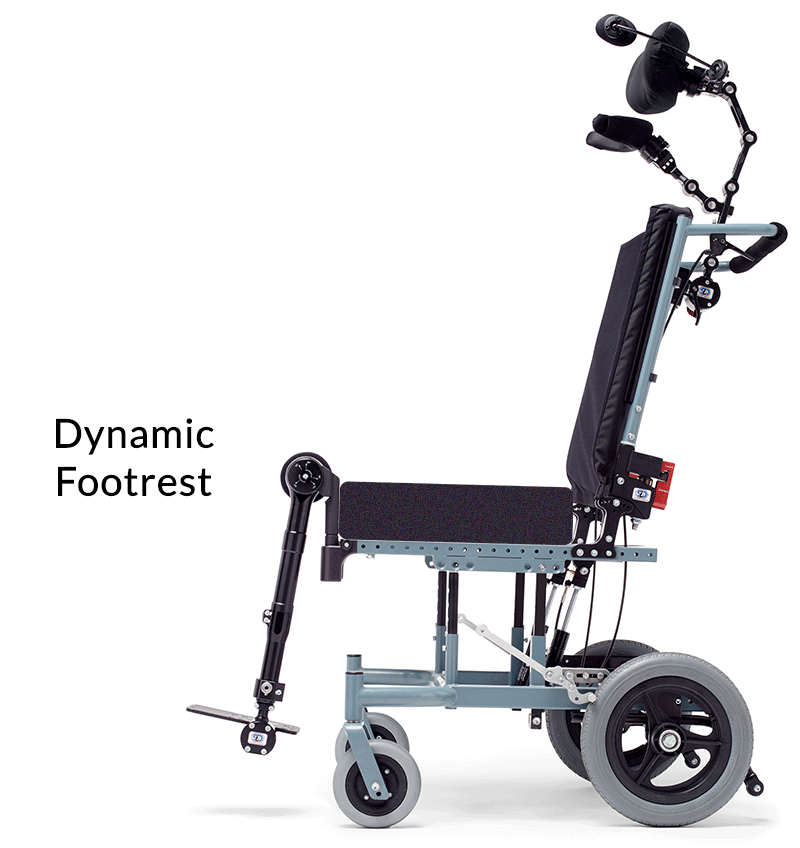
Clinical Application
Dynamic Footrests provide movement in response to client movement and force.
How does the ability to move affect equipment and the client?
- Forces are absorbed and diffused, protecting both the client and the wheelchair frame and seating system from harm.
- Extensor tone is diffused, reducing overall tone and posturing.
- Movement is provided, which can increase sitting tolerance, decrease agitation, increase alertness, and even strengthen the lower extremities.
Where is movement provided?
- Telescoping. This downward movement still absorbs and diffuses force without knee extension. This feature is appropriate when tight hamstrings limit active knee extension.
- Knee extension. Opening the upper to lower leg angle, in combination with the telescoping feature, follows the natural arc of movement which occurs when the knee is straightened.
- Plantar/dorsi flexion. When the lower extremity is extended, extension may be seen at the hip, knee, and even ankle (plantar flexion). This component absorbs and moves in response.
- Rotation. When the lower extremity is extended, external rotation may be present, leading to
the feet turning outward. The footplates rotate outward in response to client forces and then
return to neutral.
Benefits of Dynamic Footrests
Explore the Dynamic Footrest


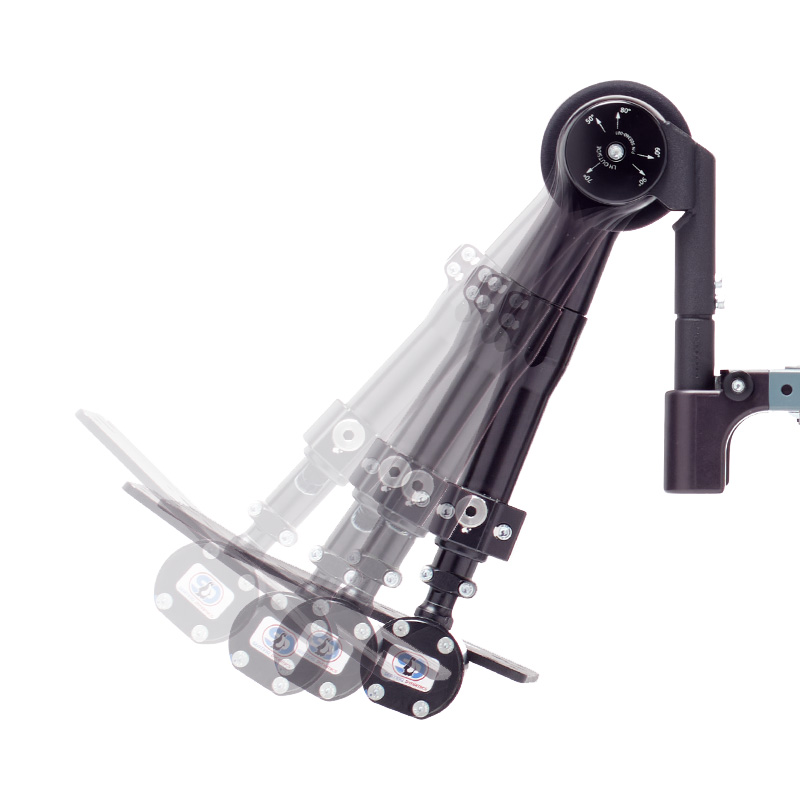
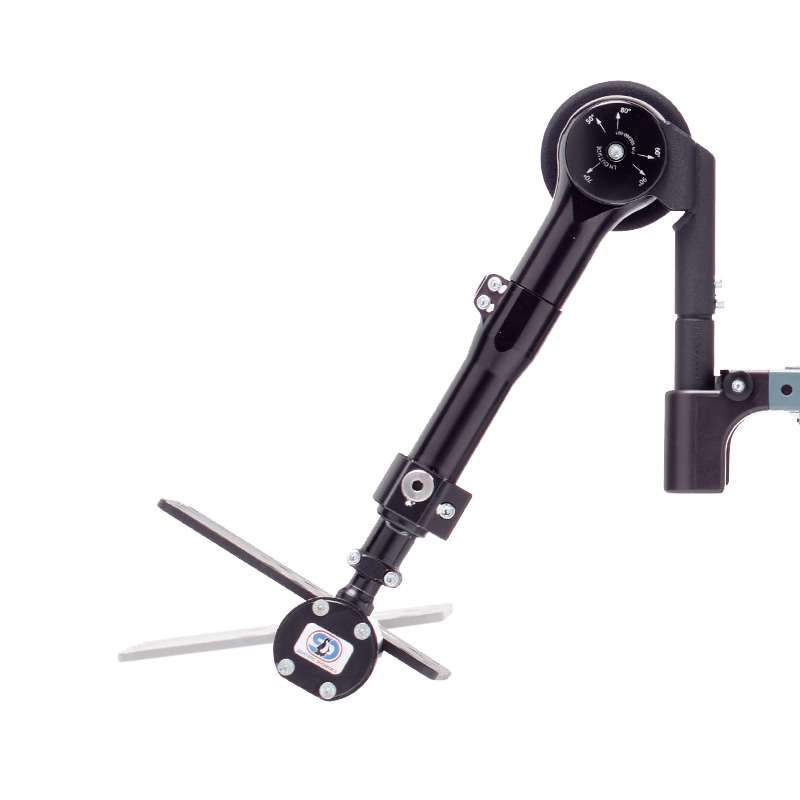
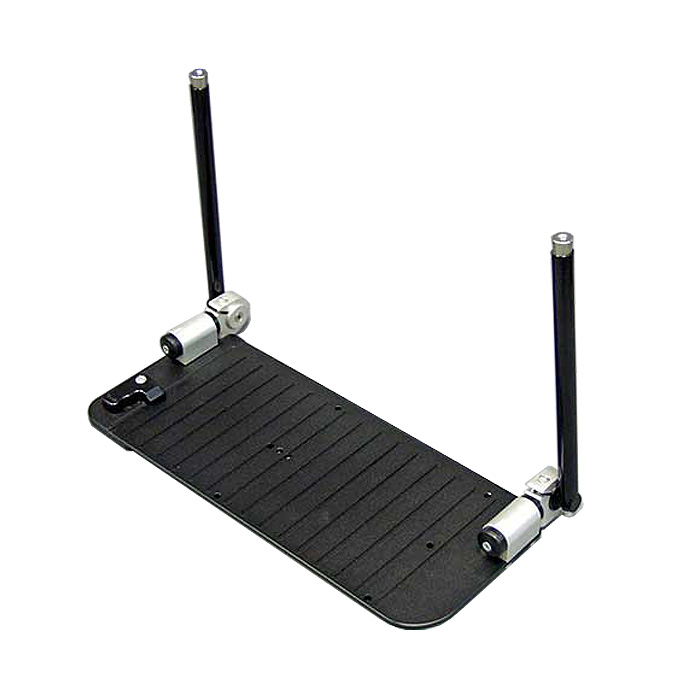
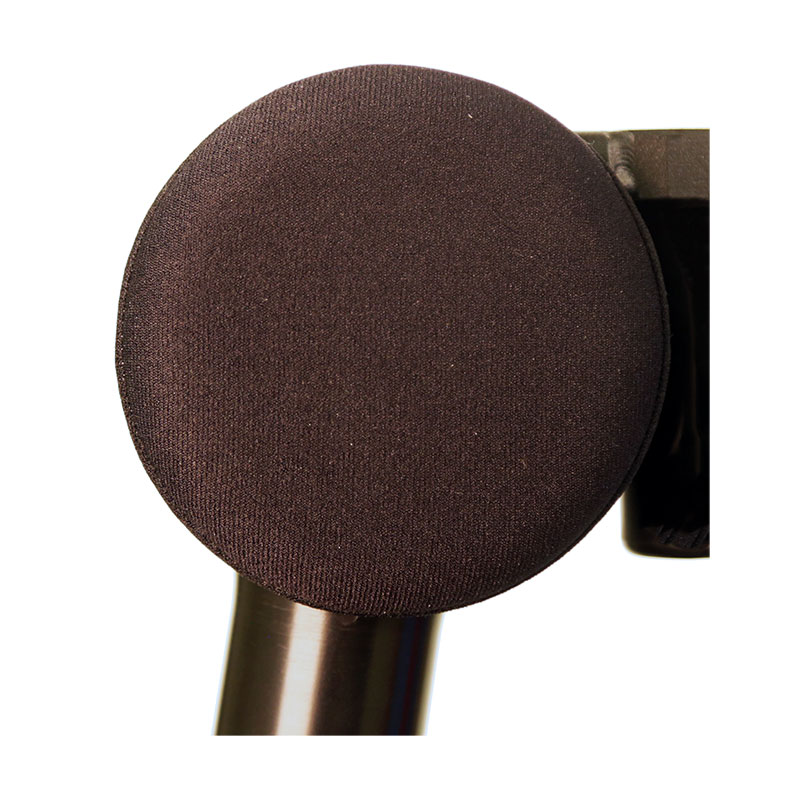
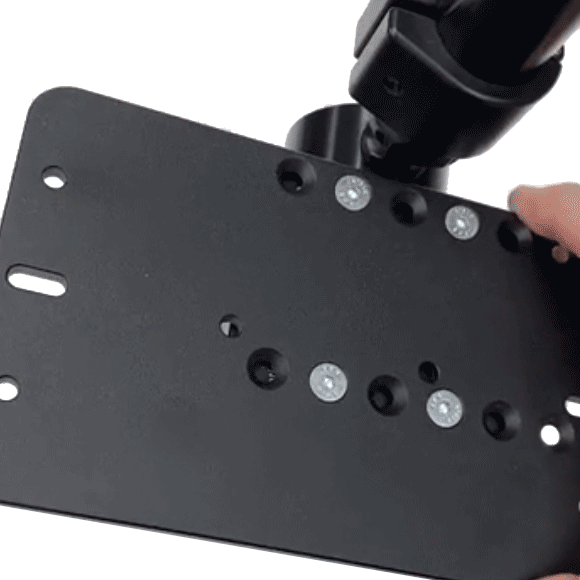
In Their Words
Myra Vasquez-Romero, OTR, ATP
Former Clinical Coordinator
Outpatient Pediatric Seating and Mobility Clinic
TIRR Memorial Hermann Pediatric Outpatient Rehabilitation
Houston, TX
“I have used these dynamic footrests with much success for my patients and my families. LOVE THEM.”
Judy Garber
Adaptive Equipment Technician
Skills Of Central PA, Inc.,
State College, PA
“I just wanted to send one last e-mail to let you know I installed the dynamic footrests on Amber’s chair yesterday. She is very happy with how they move and work for her. It’s an amazing concept, and so beneficial for someone like her. Thanks again for all the help with getting her the correct parts.”
Chele
Kylie’s Mom
Cody, Wyoming
“Before Kylie got the Dynamic Footrests, she was constantly breaking her footrests. She was fracturing pieces of metal and everyone kept telling us ‘this shouldn’t happen.’ Getting the dynamic footrests has cut down on trips to the supplier for repairs.”
Watch Me Move

Sarah - she loves to move!
In this video, Sarah is forcefully and excitedly demonstrating her drive to move – and how the Dynamic Footrests on her wheelchair are facilitating that movement.

Dynamic Footrest Overview
The Dynamic Footrests move with the client’s extensor tone and return to the original starting position. Allowing movement may reduce active extension and reduce agitation.
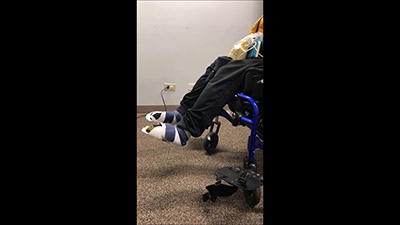
Determining if Dynamic Footrests are Appropriate
In general, if a client has moderate to significant extension and/or has a history of equipment breakage, Dynamic Footrests may be a welcome addition to their seating system.
Technical Information & Options
The Dynamic Footrests can be installed at the required angle and with the appropriate amount of resistance to optimize client use.
Resistance
Degree and frequency of movement will vary by client and may even vary throughout the day for one individual. Selecting the appropriate amount of resistance ensures force absorption and diffusion, storing energy to provide a gentle return to the starting position. If the resistance is too high, the client may not be able to move the component. If the resistance is too low, the component may not readily return to the starting position.
- Telescoping: Resistance is provided by a spring. Medium (Blue) is installed as the default. A Soft (Yellow) and Firm (Green) spring are also included to change the level of resistance.
- Knee elevation: Resistance is provided by elastomers. Medium (Blue) elastomers are installed and the resistance cannot be changed.
- Plantar/Dorsi flexion: The resistance of the elastomers in the ankle joint cannot be changed.
- Rotation: The rotating footplates are shipped with two springs, one of which is already
installed. If more resistance is required, the second spring can also be installed.
Maintenance
The elastomers and springs can be changed when worn to maintain optimal functioning. As the elastomer or spring repeatedly absorbs strong forces, wear occurs to this replaceable component, protecting the client from injury and the equipment from damage. The springs (used for telescoping movement and footplate rotation) generally do not require replacement. We recommend checking the elastomers for wear every 6 months. In general, if a client is moving the Dynamic Footrests in a certain direction too readily or not readily returning to a starting position, the elastomers need to be replaced.
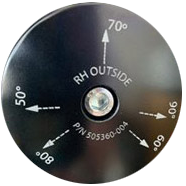 Angles
Angles
- Telescoping only knee angle: Adjusts in 7.5° increments and telescopes downward up to 1.5”.
- Telescoping and elevating knee angle: Starting position options include 90, 80, 70, 60, or 50 degrees. The footrest can elevate up to an additional 30°.
- Footplate angle: The lower extension on the Dynamic Footrests can be rotated to the required starting angle (for example, to accommodate tibial torsion). This is a static position, however, can be combined with dynamic footplate rotation.
Height/Length
- Pivot Point: The Dynamic Footrest matches the natural pivot point of the knee, providing smooth and efficient knee elevation during use.
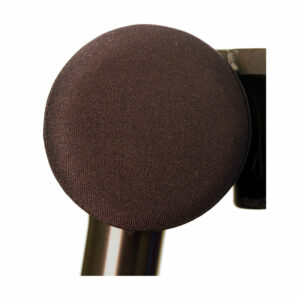 Optional Lateral Kneepad
Optional Lateral Kneepad
The Lateral Knee Pad prevents lateral knee and lower leg contact with the metal surfaces of the Dynamic Footrests and keeps the lower extremity in alignment with the pelvis, limiting excessive hip abduction. The pad, which replaces the inside cover, is 3 1⁄2” in diameter and 3⁄4” thick. Use of bilateral pads will reduce the overall width between the Dynamic Footrests by 3⁄8” on each side. The pad has a machined aluminum plate base supporting molded urethane foam and a black neoprene and Dartex cover.
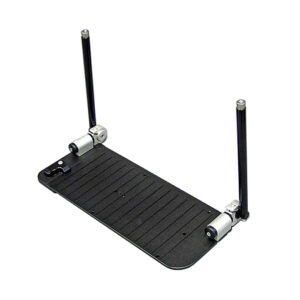 Optional 1 Piece Footboard
Optional 1 Piece Footboard
Depending on available range of motion or contractures of the knee and ankle joints, a client’s foot position may not align with a standard foot plate position. A Footboard provides a wider surface to accommodate unique foot placements. Other Seating Dynamics hardware (such as our Adjustable Windswept Option below) can also be used to accommodate these needs. On our Dynamic Footrests, The Footboard will respond with movement even if pressure only occurs on one side. The Footboard is not compatible with our Rotating Footplates.
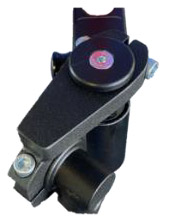 Adjustable Windswept Option
Adjustable Windswept Option
When the lower extremities are windswept, one hip is abducted and the other adducted. The Adjustable Windswept Option supports the feet where required, typically with one footplate abducted (outward laterally) and one footplate adducted (inward medially). Overcorrecting a windswept tendency can lead to pelvic rotation.
The Adjustable Windswept Option can also be used to accommodate bilateral hip adduction or abduction postures.
Dynamic Footrest Options
WHAT'S NEW
Seating Dynamics is excited to offer a new Dynamic Footrest option, Rotation! When the lower extremity is extended, external rotation may be present, leading to the feet turning outward. The footplates rotate outward in response to client forces and then return to the set starting position.
Connect with Seating Dynamics
Footrest Resources
Quick Class: Maintaining Posture in a Wheelchair by Providing Movement with Dynamic Seating
Explore why clients lose their posture in a wheelchair & how Dynamic Seating can help.
Read MoreHuntington’s Disease and Dynamic Seating
See how Dynamic Seating has helped Chris with involuntary movement from Huntington’s Disease.
Read MoreOliver – Increasing Strength and Decreasing Constipation
Oliver is an adorable 5 year old male born at 40 weeks with forceps delivery due to transverse presentation. Several weeks after birth, he was diagnosed with epilepsy, spastic quadriplegia, cortical vision impairment, and hypothyroidism.
Read MoreADDITIONAL OPTIONS for product users
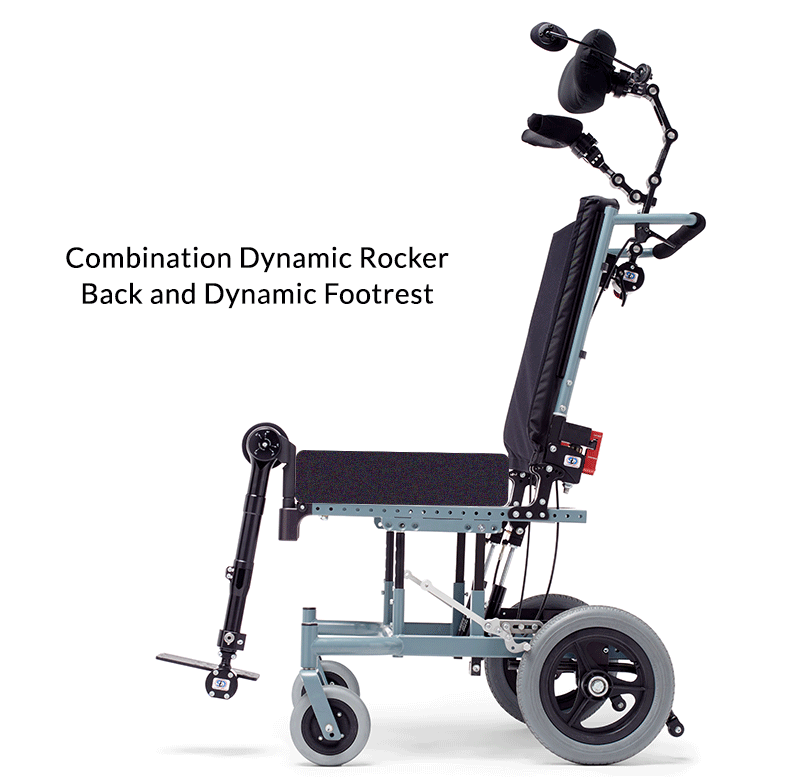
Combined Dynamic Back & Foot Components


